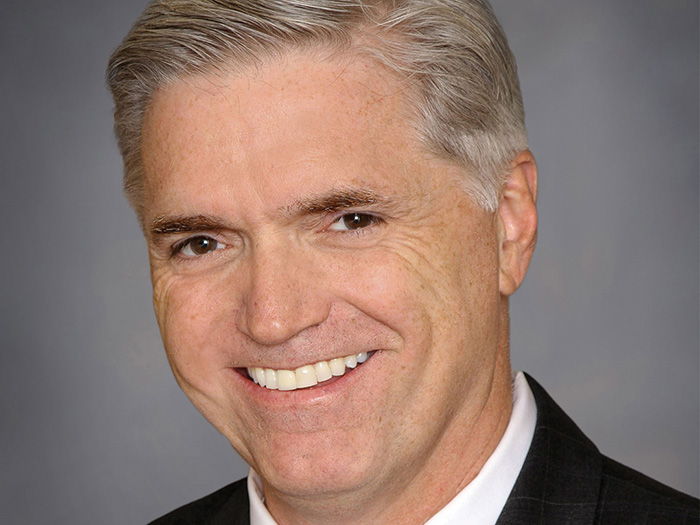How Will MICRA Impact California’s Med Mal Insurance? Get the Lowdown on the Implications from Marsh’s Gisele Norris

When the State of California passed the Medical Injury Compensation Reform Act (MICRA) in 1975, it capped all non-economic damages as a result of medical negligence at $250,000.
Last month, a modernized MICRA went into effect, reclassifying negligence into two categories with significantly higher caps: $350,000 for actions that don’t result in death and $500,000 of those that do.
It also defined three categories of defendants (health care providers, health care institutions and unaffiliated defendants), each of which can be held liable individually, potentially allowing plaintiffs to stack three damage claims at once.
We spoke with Gisele Norris, a doctor of public health and the managing director of Marsh’s U.S. health care practice, about what these changes will mean for the insurers writing business in the state.
Risk & Insurance: When California passed the original MICRA in 1975, what were the conditions this act was meant to address?
Gisele Norris: In 1975, there had been so many losses that medical malpractice rates rose to such an extent that providers were leaving the state. California considered that to be a pretty serious crisis.
MICRA was legislation that arose in response to that crisis. It was really quite successful for many, many years at keeping hospital and medical professional liability rates low, primarily due to the $250,000 cap on non-economic damages.
R&I: This issue with damages getting too high — was that unique to California?
GN: At the time, I think California was having a more severe problem than other states. Since then, we have seen the same problem in other states and venues where this kind of tort reform does not exist.
For this reason, some other states have attempted to mimic MICRA over the years. For example, several years ago, Texas put in some tort reform that — although not a replica of MICRA — did incorporate elements of MICRA. And other states have also looked to California as a model.
R&I: Can you explain the meaning of “non-economic damages?” Is that what we typically call pain and suffering?
GN: That’s exactly right — the intangible types of loss or perceived loss that come in the wake of some kind of medical negligence.
When you’re talking about economic damages, those are things that can be counted — lost wages is a big component of that, for example, as is medical expense. In recent years, one of the ways that plaintiff attorneys have gotten around MICRA is that they have really tried to add up a lot of economic damages; they argue that the lost wages should be very high, which can be a good strategy if you can substantiate it.
For example, imagine you have as a plaintiff who worked in the tech industry and was in line for a big job, then you might be able to make this argument — especially if you can get someone on the stand, maybe their boss, saying “No, this person was going to replace me and would have made a lot of money in the future.” That is the kind of argument that might be used to substantiate very meaningful economic damages.
Another element that plaintiffs’ attorneys really leveraged to increase economic damages was life care planning. To the extent that someone had sustained injuries that would require care over the course of their lifetime or over the course of many years — a whole industry arose around this, actually, plaintiff counsel would estimate how much money that would cost — and estimate how much those costs would increase over time — and what kinds of caregivers would be needed, and whether the injured party would need care 24 hours a day.
Those different expenses were often estimated and summed up, and then sometimes those damages were maximized, which could result in astronomical sums.
R&I: How can we put a dollar amount on pain and suffering? And when you put that figure in front of a jury, how does the jury evaluate it?
GN: That’s a very subjective question … A good plaintiff’s attorney is going to create a narrative and hope to gain the sympathy of the jury around that narrative, that this person was wronged to such an extent that this big corporation — let’s say it’s a for-profit hospital company, for example — this big company should award them some amount of money because they have been wronged.
It’s really a bit of a subjective assessment, and there’s a couple sides there, right? How serious was the injury? How good is the plaintiff’s attorney? How good is their story? How sympathetic is the jury? Who’s on that jury?
Some juries will be made up of people who are very sympathetic to the idea that any error deserves significant financial remuneration. There’s a little bit of a lottery mentality, a little bit of economic justice, maybe, that “This injured individual has nothing, but the big company makes millions of dollars in profit a year,” right?
R&I: MICRA now has two different categories — non-wrongful death actions and wrongful death actions — and it has also changed from one cap to three higher caps, based on the type of defendant, allowing people to stack damages. In theory, the cap for wrongful death just went up by 600%. Is that a realistic scenario — that some damages will go up 600%?
GN: I think so. This is just for non-economic damages, remember, and the cap was $250,000 across all classes. That was the total cap. And now you’ll see it’s $1,050,000 [for non-wrongful death actions] and $1.5 million [for wrongful death actions].
That’s still a relatively good cap. MICRA has actually been challenged many times in the past, through ballot initiatives and other legislative processes. And a lot of times, what was being attempted was a total removal of the cap.
What happened in May 2022 is that there was another ballot initiative on the horizon — you know, in California, we have a ballot initiative process; you can get anything on the ballot if you have the right number of signatures. So there was another ballot initiative being threatened, and a coalition of folks got together, including the California Hospital Association and the California Medical Association. And they came up with something that they thought was a reasonable cap. Because $250,000 — most people agree — was no longer a reasonable cap.
So they sat down and talked to the attorneys and to each other and they said, “Okay, we think it’s fair that the cap should go up, as long as we can maintain something that we believe to be a reasonable cap.” And that’s really what happened here. This is not a terrifically controversial change. Many professionals and hospitals were relieved that a cap remained in place, and they had something that was somewhat estimable.
R&I: If you’re a doctor at a private clinic, or if you’re an independently practicing doctor at an individual level, are you going to see the effects of this?
GN: In California, there’s something called the corporate practice of medicine. Most physicians are not the employees of a hospital, because they can’t be. The hospital will purchase medical malpractice on behalf of its staff — that includes nurses and other care providers who are not physicians, for the most past — but if there is a claim and a physician is involved, the hospital is likely to also be sued, because they are perceived to have the deep pockets.
Physicians are licensed professionals, and they are responsible for their own professional liability. They’re often organized as professional corporations. And that professional corporation will typically purchase malpractice on behalf of the doctors.
Smaller physician groups [professional corporations] are likely to be purchasing admitted insurance coverage, for example, from a physician insurer that writes admitted coverage in the state of California. And those insurers have to make a filing with the department of insurance, if they want to increase rates, and that takes a while. Those insurers are likely in the process of filing those rates now — we don’t know what is going to happen with those rates yet, because that process takes a little bit of time. Expectation would be that, yes, those rates would go up. We don’t really know how much, because no one has been able to get their rates fully filed yet.
As for the hospitals, there are different classes of insurers. If you think about some of the large organizations that we work with, those folks are going to have very large self-insured retentions, so they’re going to actually pay directly for a lot of their own risk in those lower layers. Maybe they pay for the first $10 million of risk out of their own pockets.
If they’re doing that, they’ll often have an actuary estimate funding and reserves for that layer. And in our experience, the actuaries have been increasing funding and reserves in respect of MICRA. Excess of that, for example, $10 million of risk, they are likely buying insurance or reinsurance from an excess and surplus lines carrier. Those excess insurers are not required to file rate changes with the state but instead use a loss rating methodology to determine premiums.
So they’re going to wait and see how losses develop before they change rates. And so they need to wait and see how losses develop, and perhaps it will not affect those insurers as much, because they are sitting up so high and the change in the caps will primarily affect the self-insured retention.
And med mal insurers have been raising prices for the last few years due to loss development arising from both to inflation and social inflation. So another question is — how much can insurers raise their rates and still be in business? But the flip side is that the insurers also need to remain solvent. There’s always a balance there. All that to say that right now, what we’re hearing from our excess insurer partners is that they’re going to wait and see how this develops over the next year or so.
And keep in mind that the caps that are listed in the paper — those are for 2023. But the cap goes up every year for 10 years. So this will develop over time.
R&I: Can you talk a bit about how the financial incentive for plaintiff’s attorneys has changed, and what this might mean to the amount of litigation that you see?
GN: There are a couple of things going on with plaintiff attorneys. One is that they were somewhat careful in the past about the suits they accepted, just due to the potentially limited compensation they could get.
For example, if they saw the potential for large economic damages, they might be more likely to bring the suit. But if there wasn’t a clear argument for meaningful economic damages, then probably they were going to be less likely to take suits. So we think that they may be more eager to accept suits because there’s potentially more money at issue.
One other thing that I think is interesting is that we may see more suits during the first quarter of every year — like, if something came up in the last half of 2022, it’s likely that attorneys will wait until the beginning of 2023 to file, because the cap would be greater at that point.
R&I: If we see damages rising, or the number of lawsuits rising — before premiums rise — that must put some pressure on carriers.
GN: A couple things there. One is, the carriers we work with typically — and again, we’re typically working with the larger excess and surplus lines carriers — they’re not just writing in California. They’ve got a broader book of business, and that’s kind of the whole game of insurance. You balance your portfolio of risk. So that’s one thing.
Two, California is probably still a better venue than a lot of other places. It’s not Cook County or King County yet. Insurers are still going to look to write here.
It does create more uncertainty for carriers, though — that is absolutely right. We are in a “watch and wait” type of a posture. And, like I said before, there are already increasing rates due to losses … this is a long-tail line of business, so it does take a while for things to play out and for you to really figure out what has happened in prior years.
R&I: MICRA was originally passed to help protect the quality of health care in California. The changes we’re seeing now, with Modernized MICRA — are they going to affect the quality of care?
GN: My first reaction is that I don’t think that they will. I don’t think that the increased cap is large enough to drive providers out of the state. And most providers have noble intentions and are always going to try to provide high quality care. The incentives for providing high quality of care remain unchanged. &











